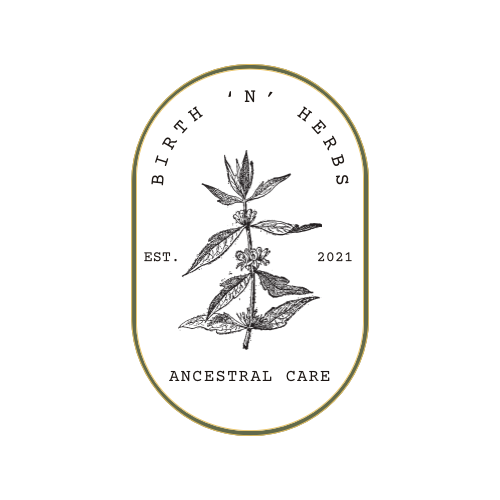
Carrying Her Legacy: What I Learned from Grand Midwife Margaret Charles Smith
Too often, the voices and legacies of Grand Midwives fade into the background of history, left out of textbooks and forgotten by mainstream narratives. But when I spent time learning about Grand Midwife Margaret Charles Smith, I knew her story needed to be remembered, shared, and honored.
I first heard of the book Listen to Me Good while sitting in the home of Grand Midwife Mama Sarahn Henderson in 2011. I had come to meet with her to discuss a possible apprenticeship. During our conversation, she urged me to read the stories of the Grand Midwives to truly understand where this calling comes from. Sankofa—we must go back and fetch the knowledge. That book is filled with gems: how to induce labor, heal small lacerations, and approach birth in low-resource communities with grace and skill. It became a foundational part of my birthwork journey, helping me see midwifery not only as a skill but as a sacred tradition.
One section that stuck with me was the detailed use of herbs and natural remedies. The Grand Midwives knew how to work with what was available—medicine that came from the earth and from deep ancestral memory. Listen to Me Good describes how Black pepper, tread sash, ginger, and bamboo briar were used to provoke heat and perspiration in the body to bring on labor. I read how dirt dauber encouraged vomiting to stimulate contractions, and how black pepper could be used alone to trigger sneezing and contractions. Bamboo briar root was also used to speed up labor and help expel the placenta.
Even hot ginger tea was used to bring on an overdue menstrual cycle. And something that still amazes me—midwives would sometimes use cloth soaked in spiderwebs to induce clotting after a birth. Reading that made me pause and reflect: this is the kind of knowledge that comes from close observation, trust in the earth, and generations of practice.
If I could tell anyone about Miss Smith, it would be other Black student midwives, birthworkers, and the clients I serve—especially young folks just beginning to explore birthwork. They deserve to know who paved the way for us. They deserve to know that the path we walk was cleared by powerful hands like hers.
Here are three lessons I’ll carry with me from Grand Midwife Smith’s story:
1. Trust the Wisdom of Tradition
Miss Smith’s take on colic—that it often came from what the mother was eating while nursing—may sound simple, but it’s rooted in deep traditional knowledge. It reminded me that we don’t always need high-tech answers; sometimes, the wisdom passed down through generations is just as powerful. Our ancestors have always known how to observe, listen, and respond to the body.
2. Resistance Looks Like Many Things
Miss Smith didn’t march in protests—not because she didn’t care, but because the violence protesters faced was real and terrifying. People were attacked by dogs, hosed, kicked, received letters threatening eviction, and some even died. She chose to resist in a different way—by continuing to care for her community. Her life reminds me that there’s no one way to resist. Showing up for your people, holding space, and preserving life is resistance, too.
3. Know When to Step Away—and Why That Matters
Later in life, Miss Smith chose not to return to midwifery because of the rise in drug use and the growing AIDS epidemic in her community. It was a heartbreaking decision, but it showed me the importance of protecting your energy and knowing when a season has shifted. Even in stepping away, her impact endured. That’s the kind of legacy I hope to build—one that lives on even when I no longer walk in the room.
Miss Smith’s story is one I’ll never forget. And as I continue on my journey to become a Grand Midwife, I’ll carry her memory—and the lessons of all the Grand Midwives—with me like a torch, lighting the way for the next generation, just as they did for us.
